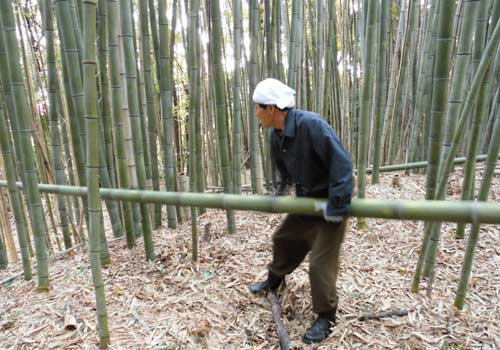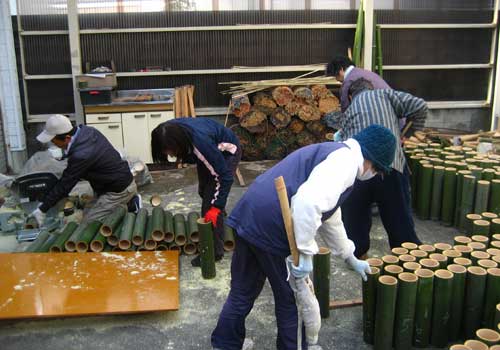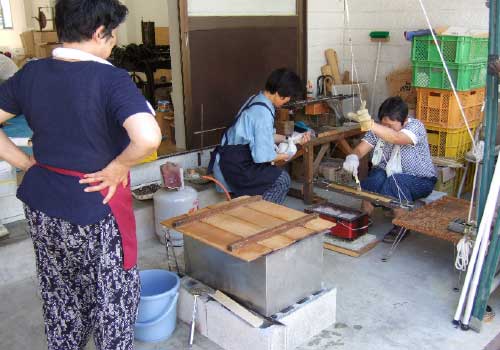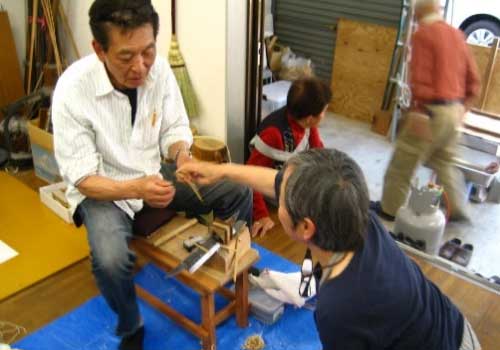
Producing Bamboo Strips
for Use as Takeosa Weaving Reeds
Techniques for producing essential bamboo weaving reeds
for traditional dyeing and weaving arts
Japan Society for the Preservation
of Takeosa Bamboo Weaving
Reed Production Techniques
Designated in 2017
18 Nishikyogoku-higashicho, Ukyo-ku,
Kyoto City, Kyoto Prefecture, 615-0816
The osa (weaving reed) is an important tool used in textile weaving. In Japan, takeosa (bamboo weaving reeds) are made from madake (Giant Timber Bamboo), which is renowned for its excellent pliability, and these takeosa have long been used in textile production. The techniques involved in the process of producing takeosa broadly include splitting and shaving bamboo logs to make small, thin bamboo strips (the teeth of the reed) and then knitting hundreds of these teeth together in rows with string to complete the reed frame. Although metal reeds have become mainstream in recent years, pliable takeosa are an important tool that is indispensable to the worlds of hand-weaving and handmade textiles.








